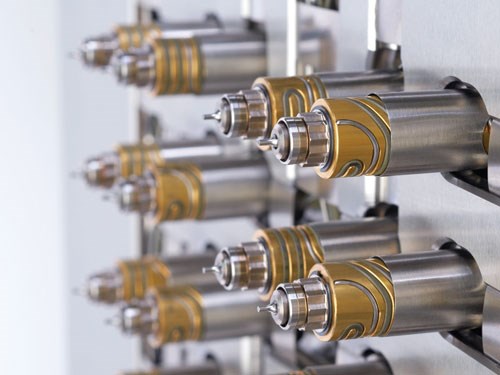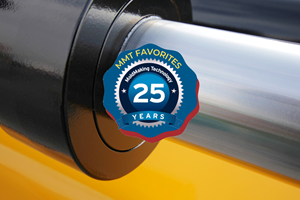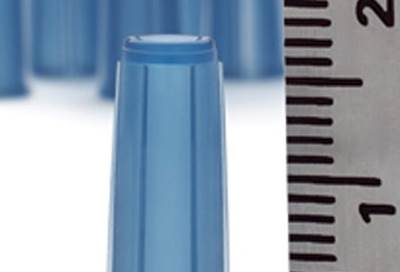Selecting a Valve Gate Hot Runner
A look at valve gate plate actuation technology for consistent part filling, excellent gate quality and close nozzle spacing.
One of the most important decisions to be made when building a new mold is which hot runner to integrate into the mold. As one of the most sophisticated components of an injection molding system, hot runners have a direct impact on profitability and part quality.
When selecting a valve gate hot runner, it is important to consider the different options available and the type of applications for which each is best suited. Valve gate hot runners offer a number of advantages that help to achieve precision and repeatability, but with so many different models on the market, it can be difficult to decide which is best suited to your manufacturing needs.
Valve gate hot runners can be broken down into two main groups: individual stem actuation and plate actuation. Within these groups, valve gate hot runners are available in pneumatic, hydraulic and electric models—each of which has its own advantages and disadvantages for certain types of applications.
Valve gate hot runners with individual stem actuation are generally a simple and cost-effective solution that is easy to integrate into the mold. Especially for lower cavitation molds, they represent today’s most common actuation method. Valve gate hot runners with plate actuation have gained market share over the past several years because they can guarantee all stems move exactly at the same time. This makes them better suited for high-cavitation applications requiring greater precision.
Of the three available actuation mechanisms, electric models provide additional cleanliness, further reduced variability and increased repeatability. Electric actuated valve gates are gaining popularity because they also provide the added benefit of allowing the user to adjust the stem motion profile for improved gate quality. In addition, electric models provide reduced energy consumption in comparison to hydraulic and pneumatic actuation.
For applications that require a high level of precision and repeatability, users should seek out a system offering an electric actuation mechanism utilizing a single servo-motor that actuates a cam mechanism to move the valve stems. The direct transfer of servo motion via the cams offers the most precise and repeatable movement—leading to 100-percent synchronized valve stem movement for improved shot-to-shot and cavity-to-cavity repeatability. A mechanical cam also allows for running high temperature resins. This is a clear distinction from belt-driven models, which can run the risk of stretching under the influence of higher temperatures or wearing out, affecting long-term precision of the actuation mechanism.
In addition, a highly synchronized plate actuated hot runner system should be equipped with stem position verification, which provides a digital method to track stem position, thereby aiding in proper documentation—especially important for medical applications.
Along with quality and precision, it is also important to choose a hot runner system that requires minimal maintenance and is easy to work on. Features like easy stem access, easily interchangeable parts and a durable build are all very important. To achieve this hot runners should be built with a very robust back-end mechanism and be virtually maintenance-free due to the use of roller bearings and a simple design. In addition, the system should ship from the factory fully adjusted, optimized and ready to run.
Many hot runners will include additional features aimed at improving ease-of-use, making operation easier and more consistent. To achieve the most user-friendly operation and consistent results, plate actuated hot runner systems should be equipped with an integrated temperature control, which should include a safety feature preventing the motor from moving if not up to proper operating temperature. This can avoid potential damage, resulting in the need for new valve stems. Also look for manufacturers offering a solid leak-proof guarantee, which prevents leakage during startup even if the system is not within its correct operating temperature range.
Related Content
The Benefits of Hand Scraping
Accuracy and flatness are two benefits of hand scraping that help improve machine loop stiffness, workpiece surface finish and component geometry.
Read MoreHands-on Workshop Teaches Mold Maintenance Process
Intensive workshop teaches the process of mold maintenance to help put an end to the firefighting culture of many toolrooms.
Read MoreSurface Finish: Understanding Mold Surface Lingo
The correlation between the units of measure used to define mold surfaces is a commonly raised question. This article will lay these units of measure side by side in a conversion format so that companies can confidently understand with what they are dealing.
Read MoreHow to Correctly Size a Hydraulic Cylinder
This week Randy shares steps for correctly sizing a hydraulic cylinder on a mold.
Read MoreRead Next
Collaboration Leads to Complete Turnkey System
To meet the special needs of this project, ICU, Husky and Tech Mold worked together to design a complete turnkey system—including machine, mold, hot runner and temperature controller.
Read MoreHow to Use Strategic Planning Tools, Data to Manage the Human Side of Business
Q&A with Marion Wells, MMT EAB member and founder of Human Asset Management.
Read MoreAre You a Moldmaker Considering 3D Printing? Consider the 3D Printing Workshop at NPE2024
Presentations will cover 3D printing for mold tooling, material innovation, product development, bridge production and full-scale, high-volume additive manufacturing.
Read More







_300x250 3.png;maxWidth=300;quality=90)


.jpg;maxWidth=300;quality=90)













